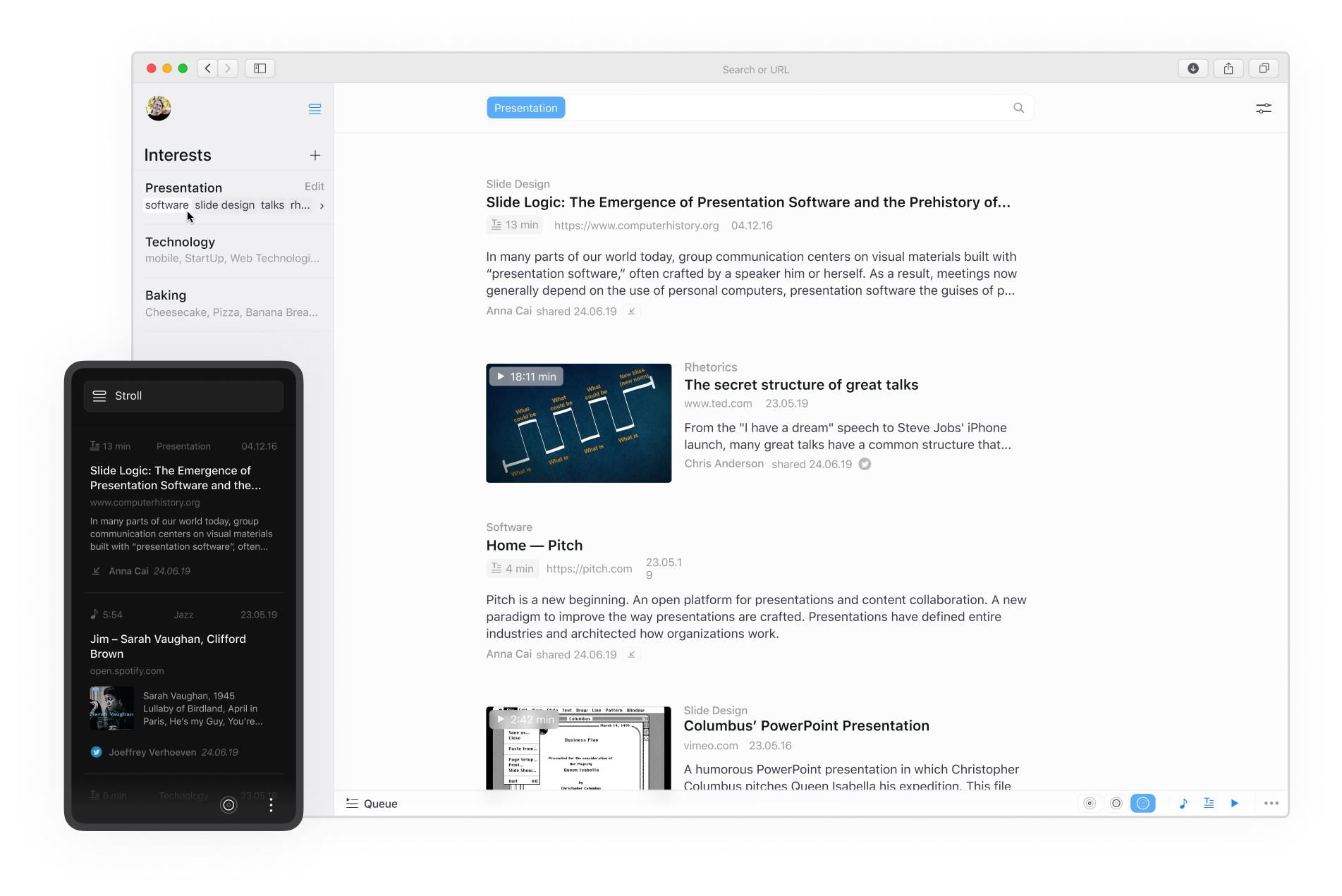concept / core areas
walk is a concept addressing three core challenges for building an environment on the Internet, people can navigate comfortably—based on their intentions. It aims to provide value to individuals and society in the long run.
01/03
How can people find value in unstructured data?
02/03
How might we enable diversity in topics and sources?
03/03
How might we foster controlled exploration based on intention?
Outcome
Throughout our thesis, we developed an approach, that puts people to the center of finding information and inspiration, not by building a communication platform, but by reengineering search and browsing and moving it to a more social context.
Example for Application








